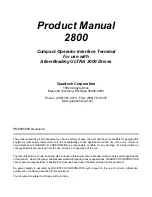
CHAPTER THREE - PL3000 BASICS
16
3. PL3000 BASICS
In this chapter, basic elements such as Windows CE shell, touch screen, and
keypad are explained. The explanation reveals basic logic of the interactions
between a user and the device. Understanding of some facilities on the PL3000
system makes also every day use of the PL3000 more effortless. Those facilities
are a database of the system settings, permanent storage options, and power
management of the device. In addition, the PL3000 are covered from the
manageable perspective telling you most of the features that comprise the system.
WINDOWS CE SHELL
Windows CE shell consists of two segments that present somewhat different
perspectives on the system. Along the bottom of the screen there is a bar element.
That element is called taskbar, and it has different areas to show different things
such as time and active input method being available on the touch screen by
keystroke. The taskbar is explained in more detail in its own section on the next
page.
The other segment occupying the main
part of the screen is the area in which it is
possible to have an access to facilities and
applications e.g. with a double-tap on their
symbolic icons. By default this so called
desktop area provides the way in the root of
the file system (‘My Device’), the way in the
hidden directory called ‘Recycle Bin’, and e.g.
the way out the Internet.
In addition to touch screen navigation,
using keys the navigation between two shell
segments and inside the segment areas is
also achievable, although, on the taskbar, the
key navigation is limited to a Start menu. The
‘tab’
key is a key to move back and forth
between the shell segments. Inside the
desktop area
the arrow keys
select the application icon being of interest. Pressing
the
‘ok’
key launches the actual application the selected icon represents.
















































